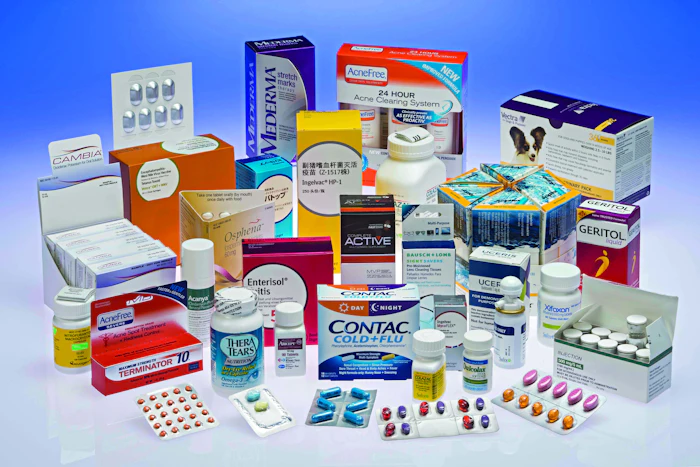Pharma Products Face Stricter Scrutiny Over Drug Brand Name Confusion: A Comprehensive Report


Explore the critical issues of drug brand name confusion and the measures being taken to enhance patient safety in our detailed report.
Discover how drug brand name confusion can impact patient safety and the rigorous measures being implemented to address these issues. Learn about the latest regulatory responses and industry best practices in our comprehensive report.
In the pharmaceutical industry, drug brand names play a crucial role in ensuring the safe and effective use of medications. However, the increasing complexity of drug names and the proliferation of similar-sounding or visually similar names have raised significant concerns about drug brand name confusion. Such confusion can lead to medication errors, compromised patient safety, and regulatory challenges. Recent reports indicate that the scrutiny over drug brand names is intensifying as regulatory bodies and stakeholders seek to address these issues and enhance patient safety. This comprehensive report delves into the factors contributing to drug brand name confusion, the impact on patient safety, and the steps being taken to address these challenges.
The Importance of Drug Brand Names
Drug brand names are critical for several reasons:
- Identification and Differentiation:
- Unique Identification: Drug brand names help in identifying and differentiating medications, which is essential for avoiding medication errors and ensuring that patients receive the correct treatment.
- Market Recognition: Brand names also contribute to the market recognition of a drug, influencing prescribing practices, patient adherence, and brand loyalty.
- Patient Safety:
- Avoiding Mix-Ups: Clear and distinct brand names are vital for avoiding mix-ups between different drugs, which can lead to serious health consequences.
- Patient Communication: Effective brand names help patients and healthcare providers communicate clearly about medications, including their purpose, dosage, and potential side effects.
- Regulatory Compliance:
- Approval Process: Drug brand names must be approved by regulatory agencies, such as the U.S. Food and Drug Administration (FDA) and the European Medicines Agency (EMA), to ensure they do not conflict with existing names and do not pose risks to patient safety.
Factors Contributing to Drug Brand Name Confusion
Several factors contribute to drug brand name confusion:
- Similar-Sounding Names:
- Phonetic Similarities: Drugs with names that sound similar can be easily confused, especially in verbal communication. For example, names like “Lipitor” and “Lyrica” might be confused if pronounced quickly or without clear enunciation.
- Name Overlap: The use of prefixes or suffixes that are common across different drugs can create confusion. For example, many drug names include the suffix “-olol” for beta-blockers, which can lead to mix-ups.
- Visual Similarities:
- Typeface and Design: The visual design of drug labels, including font size and typeface, can contribute to confusion. Similar-looking labels or packaging can lead to errors in drug administration.
- Packaging: Drugs with similar packaging or color schemes may be mistaken for one another, especially in busy or high-pressure environments.
- Market Proliferation:
- High Number of Drugs: The increasing number of available drugs and brand names contributes to a crowded marketplace, making it more likely for similar names to emerge.
- New Drug Approvals: As new drugs are approved, the potential for confusion with existing names increases, particularly if the new names are similar to those of established drugs.
- Lack of Standardization:
- Inconsistent Naming Conventions: The absence of standardized naming conventions across different countries and regulatory bodies can lead to variations in drug names and increased risk of confusion.
- Regional Differences: Different countries may have different brand names for the same drug, which can create confusion among international patients and healthcare providers.
Impact on Patient Safety
Drug brand name confusion can have serious consequences for patient safety:
- Medication Errors:
- Incorrect Drug Administration: Confusion between similar-sounding or similar-looking drug names can result in patients receiving the wrong medication, leading to adverse effects or ineffective treatment.
- Dosage Errors: Misidentification of drugs can also lead to incorrect dosages, which can have severe consequences, particularly for medications with narrow therapeutic windows.
- Adverse Drug Events:
- Health Complications: Medication errors resulting from brand name confusion can lead to adverse drug events, including allergic reactions, drug interactions, and other health complications.
- Increased Hospitalizations: Errors related to drug confusion can result in increased hospitalizations, additional treatments, and longer recovery times.
- Patient Trust and Compliance:
- Erosion of Trust: Frequent medication errors can erode patient trust in the healthcare system and reduce confidence in prescribed treatments.
- Adherence Issues: Patients who experience medication errors may be less likely to adhere to their prescribed treatment regimens, potentially worsening their health outcomes.
Regulatory Responses to Drug Brand Name Confusion
Regulatory bodies are increasingly focusing on drug brand name confusion to enhance patient safety. Some key measures include:
- Enhanced Review Processes:
- Pre-Approval Screening: Regulatory agencies conduct thorough reviews of proposed drug names to ensure they are distinct and do not pose risks of confusion with existing names.
- Simulations and Testing: Some agencies use simulations and testing to evaluate the potential for confusion and assess the impact of drug names on patient safety.
- Collaboration with Stakeholders:
- Industry Collaboration: Regulatory bodies work closely with pharmaceutical companies, healthcare professionals, and patient advocacy groups to identify and address potential naming issues.
- Public Input: Stakeholder feedback, including input from healthcare providers and patients, is considered in the naming review process to identify potential areas of concern.
- Name Change Requirements:
- Name Modifications: In cases where confusion risks are identified, regulatory agencies may require modifications to drug names to reduce the potential for errors.
- Communication of Changes: Pharmaceutical companies are required to communicate any changes in drug names effectively to healthcare providers and patients to ensure awareness and reduce confusion.
- Standardization Efforts:
- International Collaboration: Efforts are underway to standardize drug naming conventions across different countries and regulatory bodies to reduce the risk of confusion.
- Guidelines and Best Practices: Regulatory agencies provide guidelines and best practices for drug naming to ensure consistency and clarity in the marketplace.
Industry Best Practices for Avoiding Brand Name Confusion
Pharmaceutical companies can adopt several best practices to minimize the risk of brand name confusion:
- Rigorous Naming Process:
- Comprehensive Research: Conduct thorough research to ensure proposed drug names are unique and do not resemble existing names. This includes phonetic and visual assessments.
- Involvement of Experts: Engage experts in drug naming and branding to evaluate potential risks and develop distinct and effective names.
- Clear and Distinct Packaging:
- Design Considerations: Ensure that packaging design, including font size and color schemes, is distinct and reduces the likelihood of confusion.
- Label Clarity: Use clear and legible labeling to facilitate accurate identification and reduce the risk of errors.
- Education and Training:
- Healthcare Provider Training: Provide training and education for healthcare providers on the importance of accurate drug identification and the potential risks of brand name confusion.
- Patient Education: Educate patients about their medications, including the importance of verifying drug names and reporting any concerns.
- Monitoring and Reporting:
- Post-Market Surveillance: Monitor drug names and packaging post-market to identify and address any emerging issues related to confusion.
- Error Reporting Systems: Implement systems for reporting and tracking medication errors related to brand name confusion to facilitate timely intervention and corrective actions.
Case Studies and Examples
Several case studies highlight the impact of drug brand name confusion and the steps taken to address these issues:
- Case Study 1: Lipitor vs. Lyrica
- Issue: The similarity between the names “Lipitor” (a cholesterol-lowering drug) and “Lyrica” (a medication for nerve pain) led to confusion in verbal communication and prescribing practices.
- Resolution: Enhanced labeling and communication strategies were implemented to differentiate the drugs and reduce the risk of errors.
- Case Study 2: Celebrex vs. Celexa
- Issue: The similarity between “Celebrex” (a pain reliever) and “Celexa” (an antidepressant) resulted in medication mix-ups and adverse effects.
- Resolution: Regulatory agencies required modifications to labeling and packaging to improve clarity and reduce confusion.
- Case Study 3: Warfarin vs. Coumadin
- Issue: The name confusion between “Warfarin” (an anticoagulant) and “Coumadin” (its brand name) led to dosing errors and patient safety concerns.
- Resolution: Standardization of drug naming and improved education for healthcare providers and patients were implemented to address the issue.
Future Directions and Recommendations
To further address drug brand name confusion and enhance patient safety, several recommendations can be considered:
- Ongoing Research:
- Phonetic and Visual Analysis: Continue research on phonetic and visual similarities in drug names to identify potential risks and develop strategies for differentiation.
- Impact Assessment: Assess the impact of drug name confusion on patient safety and healthcare outcomes to inform regulatory and industry practices.
- Increased Collaboration:
- Global Initiatives: Foster international collaboration to standardize drug naming conventions and reduce variability across countries and regulatory bodies.
- Stakeholder Engagement: Engage stakeholders, including healthcare providers, patients, and industry experts, in the drug naming process to address concerns and improve practices.
- Technological Solutions:
- Advanced Detection Tools: Utilize advanced technologies, such as artificial intelligence and machine learning, to detect and address potential drug name confusion.
- Digital Labeling: Explore digital labeling and barcoding solutions to enhance drug identification and reduce the risk of errors.
- Patient-Centered Approaches:
- Clear Communication: Prioritize clear communication with patients regarding their medications, including potential risks and steps to verify drug names.
- Error Reporting: Encourage patients and healthcare providers to report any medication errors or concerns related to drug names to facilitate timely intervention.
Drug brand name confusion poses significant risks to patient safety and highlights the need for stringent scrutiny and effective measures to address these issues. While sugar is often highlighted as a major factor in the rise of diabetes, it is important to recognize that diabetes is a complex condition with multiple contributing factors. Genetics, obesity, physical inactivity, poor diet, hormonal imbalances, sleep patterns, and age all play significant roles in the development of diabetes. Addressing diabetes requires a comprehensive approach that goes beyond simply reducing sugar intake.
By adopting a balanced diet, engaging in regular physical activity, managing weight, and addressing other contributing factors, individuals can effectively reduce their risk of developing diabetes and improve their overall health. Public health initiatives and supportive environments also play a crucial role in preventing and managing diabetes on a larger scale.
For a more detailed exploration of diabetes, including expert insights and practical tips, watch our full video here. Understanding the multifaceted nature of diabetes can empower individuals to make informed decisions and take proactive steps toward better health.
Recent Posts
Holi and Eye Safety: Protect Your Vision During Festivities
Holi, the festival of colors, is one of the most vibrant and joyous celebrations in…
FDA Recalls Popular Skincare Products Over Cancer-Causing Chemical
In a major development, the U.S. Food and Drug Administration (FDA) has issued recalls for…
Kidney Transplant Crisis: Why 98% of Patients in Delhi Die Waiting
In Delhi, the struggle for kidney transplant patients is a dire one. Less than 2%…
Diabetes & Eye Health: Why Regular Screening Matters
Diabetes is a chronic condition that affects millions of people worldwide. It occurs when the…
What Happens to Your Body in the First 72 Hours After Quitting Smoking?
Quitting smoking is one of the most significant steps you can take to improve your…
Deadly Flu Outbreak in Delhi-NCR: Hospitals Overwhelmed
As the warmer months set in, Delhi-NCR is witnessing an alarming surge in flu cases,…

